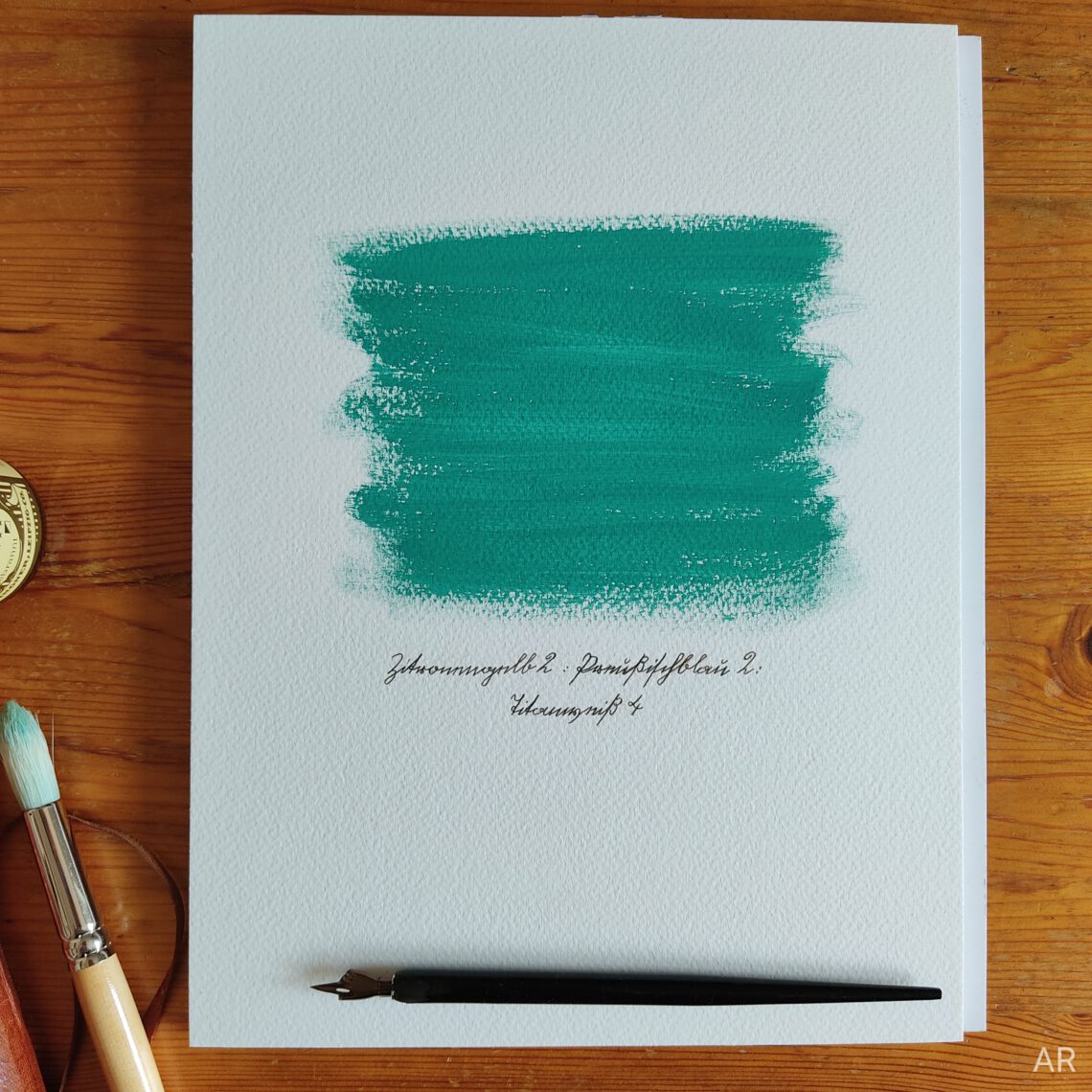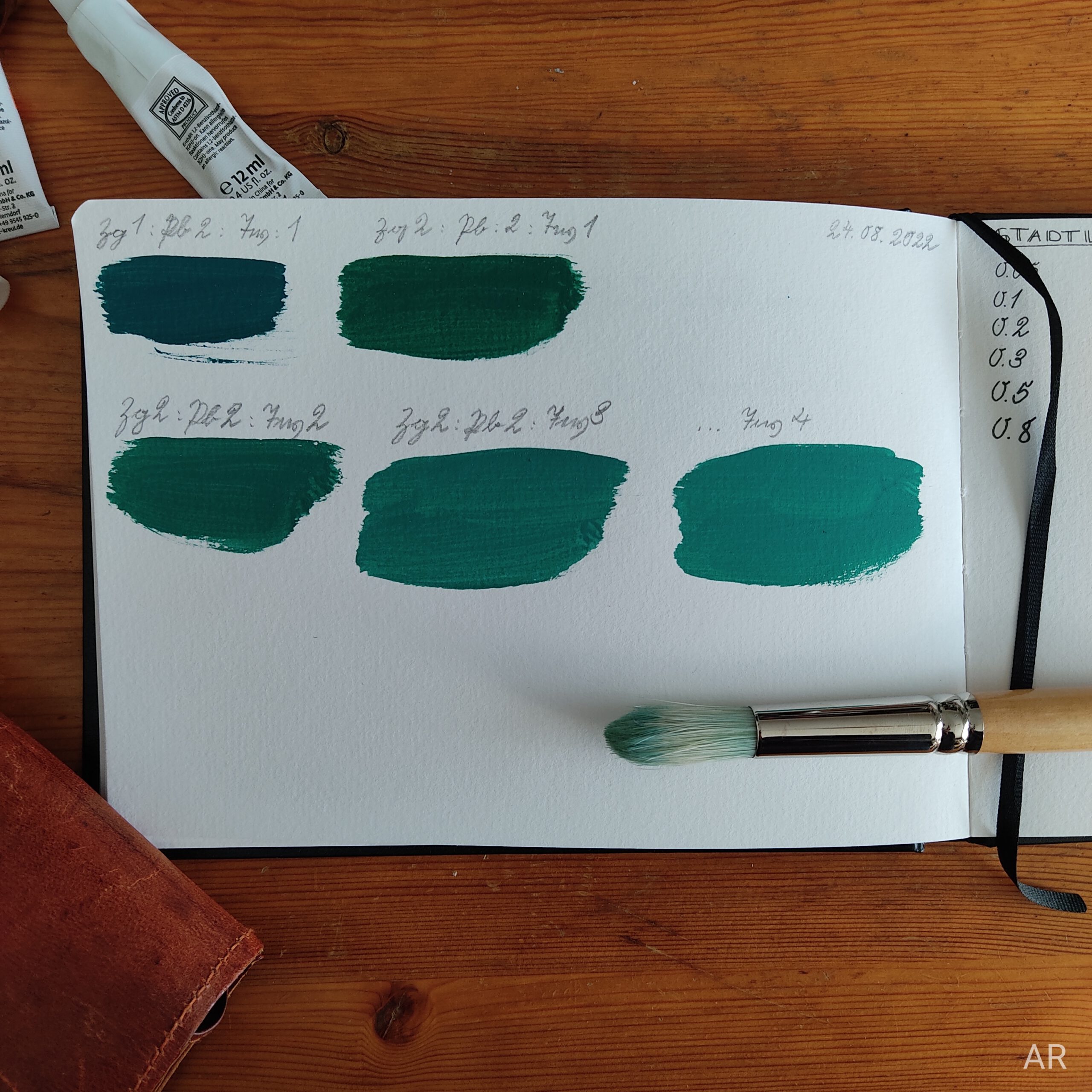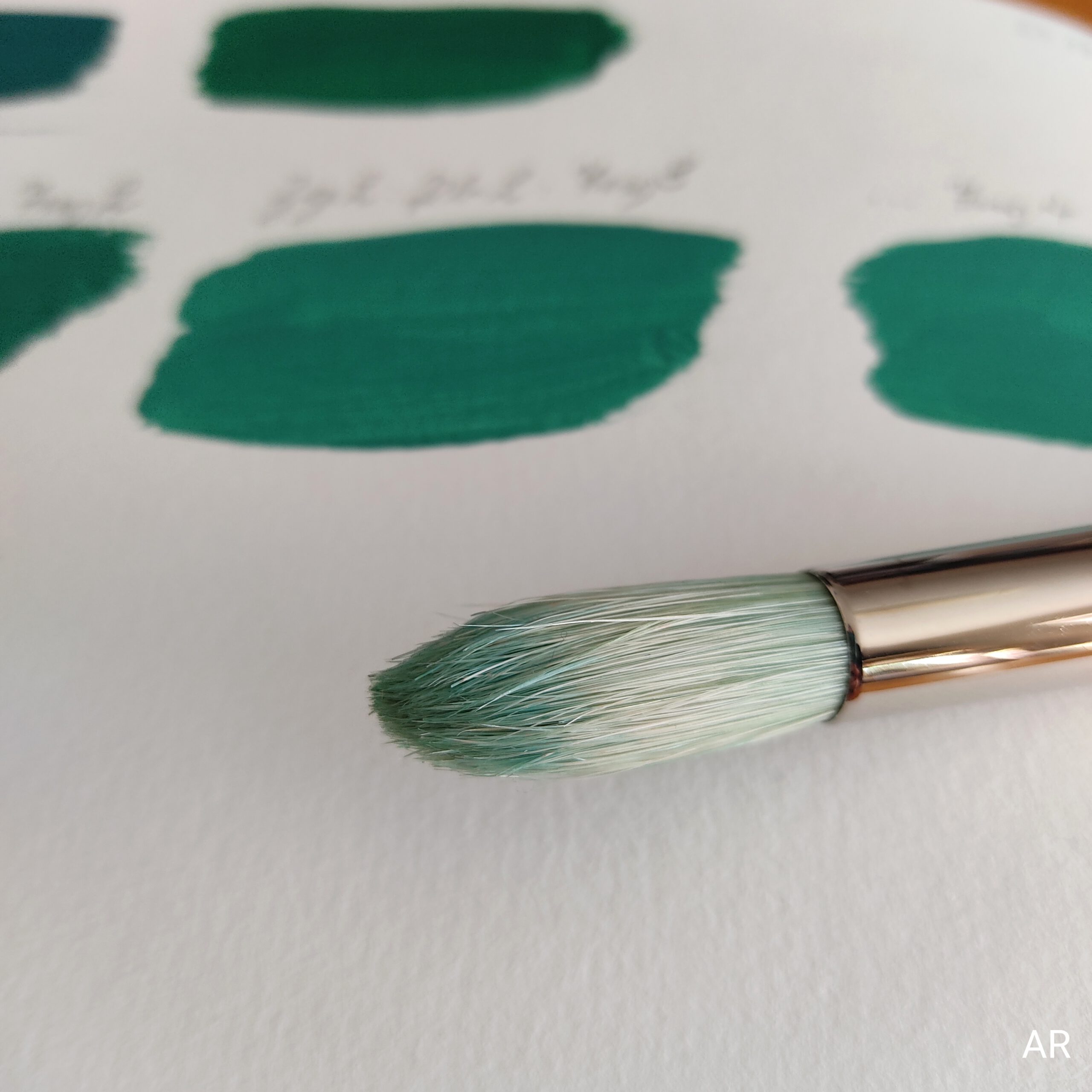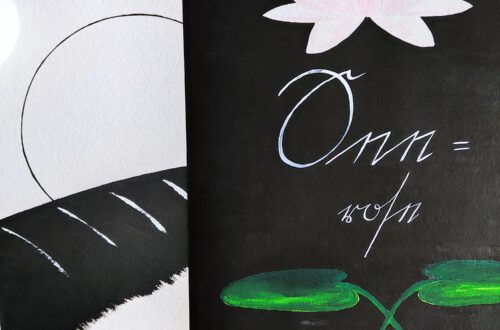
Ocean green – Ozeangrün
Ocean green – what comes to your mind when you hear that? To me it’s vastness and depth. Freedom maybe. And – of course – a good portion of mysteriousness!
This piece is closely related to the „Violett“ study with its many shades of violet. As with the violet I was searching for a special tone of green and started combining blue and yellow to see where it would lead (more precisely Prussian blue and Lemon). Well, quite quickly I got where I wanted to but was curious about what would happen if I added some white? The result was delighting and I couldn’t stop adding more and more white … Until that wonderful tone I call ocean green (don’t know if that is the official name for that colour) appeared and I fell madly in love with 🙂
I just had to do something with this colour right away so I painted what you see here. A square of colour, simple as that. But nevertheless beautiful, enchanting, dreamy. After painting I remembered that in my childhood occasionally there were dancing competitions shown on TV. I loved them! Because of the elegant movements but even more because of the costumes 🙂 One time there was a female dancer wearing that incredible beautiful dress in just that ocean green colour and I was sooo fascinated back then! It was like the most beautiful colour I’d ever seen and immediately I was captured in a world of mermaids and underwater-sceneries. Yeah, mermaids make a great part of my childhood 🙂 Well, that episode came to my mind after painting that ocean green square. Obviously the fascination has not vanished …
Like with the „Violett“ piece what is written in kurrent script underneath the ocean green square are the single components it is made of with the numbers showing the ratio in the combination. In this case I used two parts of Lemon („Zitronengelb“) together with two parts of Prussian blue („Preußischblau“) and four parts of Titanium white („Titanweiß“).
Research
The sea or maybe waters in general come in so many colours. Blue of course, in countless variations reaching from a bright turquoise to greyish. The latter I connect with the North Sea for example. And those colours bring different associations, right? As if the water bodies had their own personalities (don‘t they?).
Of course we all know the pictures of those fantastic bright blue Caribbean beaches! But also in Germany there are some more colourful waters than the grey North Sea 🙂 For example the river Isar shows a really bright turquoise or maybe icy blue, sometimes also ocean green or even crystal clear. Incredible!
So why the different colours? Once more we move in the fields of physics. Water absorbs the red parts of the light while the blue parts scatter. The latter is what hits our eye and why bigger water bodies appear blue to us. I think of it as kind of their natural colour.
Then it also depends on what kinds of particles are in the water, each reflecting and absorbing different parts of the light and therefore changing the water colour.
Phytoplankton, algae or plants for example make the water look green. White particles like lime or white sand let the water appear brighter and therefore intensifying its natural blue. With dark sand or gravel it is the opposite making it look darker and less shiny. Certain minerals and bacteria can make the water look even reddish or yellow (e. g. sulphur).
So my personal conclusion from this excursion in optics (which I hope to got correctly) is that the beautiful ocean green colour might show up where algae or other chlorophyll-containing structures are present maybe together with very bright or white particles. Does that make any sense? If you have another idea please let me know!
Talking about particles and water Wikipedia tells us there is a tool to measure how clear the water is. It was invented in 1865 by the italian priest and academic Angelo Secchi and is called the Secchi-disk. The disk is lowered below the water surface. The more transparent the water is the further down below the Secchi-disk can be seen.
It is still used today – isn’t that incredible! – and gives insights about water transparency and trubidity.
Have a great day!
Annika










